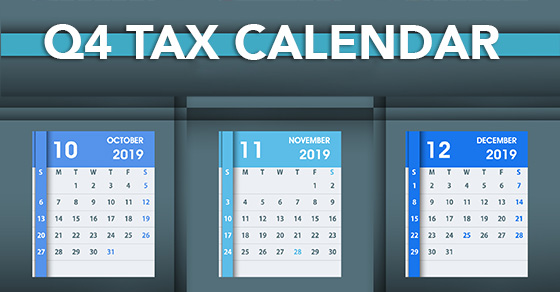5 ways to withdraw cash from your corporation while avoiding dividend treatment
- ByPolk & Associates
- Sep, 20, 2019
- All News & Information
- Comments Off on 5 ways to withdraw cash from your corporation while avoiding dividend treatment
Do you want to withdraw cash from your closely held corporation at a low tax cost? The easiest way is to distribute cash as a dividend. However, a dividend distribution is taxable to you as a shareholder but it’s not deductible by the corporation. But there are several alternatives that may allow you to withdraw cash from a corporation and avoid dividend treatment. For example, you might be able to receive capital repayments, or obtain reasonable compensation for you (or family members), as well as certain fringe benefits. If you’re interested in discussing these or other ideas, contact us. We can help you get the maximum out of your corporation at a minimum tax cost.
For best results, start your strategic planning early
- ByPolk & Associates
- Sep, 11, 2019
- All News & Information
- Comments Off on For best results, start your strategic planning early
Although it’s probably too early to start chilling a bottle of bubbly for New Year’s Eve, it’s not too early for business owners to start their strategic planning for next year. Begin with your financial statements. They’ll tell you whether to be strategically ambitious or cautious. Calculate key performance indicators such as gross profit and current ratio. Also look at certain areas of your company, including human resources, sales and marketing, and production and operations. High turnover, slumping sales or too many dissatisfied customers is each a red flag that should shape strategic goals for the year ahead. We can help you crunch the numbers and put together a solid plan.
Getting a divorce? There are tax issues you need to understand
- ByPolk & Associates
- Sep, 11, 2019
- All News & Information
- Comments Off on Getting a divorce? There are tax issues you need to understand
In addition to the difficult personal issues that divorce entails, several tax concerns need to be addressed to ensure that taxes are kept to a minimum and that important tax-related decisions are properly made. For example, if you sell your personal residence or one spouse remains living there while the other moves out, you’ll want to make sure you’ll be able to avoid tax on up to $500,000 of gain. You also must decide how to file your tax return for this year (single, married filing jointly, married filing separately or head of household). There are several other issues you may have to deal with. We can help you work through all of the financial issues involved in divorce.
2019 Q4 tax calendar: Key deadlines for businesses and other employers
- ByPolk & Associates
- Sep, 11, 2019
- All News & Information
- Comments Off on 2019 Q4 tax calendar: Key deadlines for businesses and other employers
Here are a few key tax-related deadlines for businesses and other employers during Quarter 4 of 2019. OCT. 15: If a calendar-year C corp. that filed an extension, file a 2018 income tax return. OCT. 31: Report income tax withholding and FICA taxes for Q3 2019 (unless eligible for Nov. 12 deadline). DEC. 16: If a calendar-year C corp., pay the fourth installment of 2019 estimated income taxes. Contact us for more about the filing requirements and to ensure you’re meeting all applicable deadlines.
Putting together the succession planning and retirement planning puzzle
- ByPolk & Associates
- Sep, 04, 2019
- All News & Information
- Comments Off on Putting together the succession planning and retirement planning puzzle
Business owners must save for retirement and create a succession plan. To put together the pieces, ask some fundamental questions. When do I want to retire? This is when you’ll begin drawing on your savings and when your successor will take over. How much retirement income will I need? To maintain your lifestyle, you’ll likely need a substantial percentage of your current annual income. What are my retirement income sources? Think about how a business sale or continued involvement in your company will affect this. Am I saving enough? Heavy spending and an excessive debt load can delay retirement and negatively impact your succession plan. Contact us for help.
The key to retirement security is picking the right plan for your business
- ByPolk & Associates
- Sep, 04, 2019
- All News & Information
- Comments Off on The key to retirement security is picking the right plan for your business
If you’re a small business owner, you may want to set up a retirement plan for yourself and any employees. Several types of plans are eligible for tax advantages, including 401(k)s, Simplified Employee Pension (SEP) plans and SIMPLE IRAs. For 2019, the maximum amount you can contribute to a 401(k) and exclude from income is $19,000, plus a $6,000 “catch-up” amount for those age 50 or older. For a SEP plan, the 2019 maximum amount is 25% of compensation or $56,000. And for a SIMPLE IRA, the maximum 2019 amount is $13,000, plus $3,000 if you’re age 50 or older. These are only some of the options that may be available to your business. We can help find the best choice for your situation.
The next estimated tax deadline is September 16: Do you have to make a payment?
- ByPolk & Associates
- Sep, 04, 2019
- All News & Information
- Comments Off on The next estimated tax deadline is September 16: Do you have to make a payment?
If you’re self-employed and don’t have paycheck withholding, you probably have to make estimated tax payments. These payments must be sent to the IRS on a quarterly basis. The 3rd 2019 estimated tax payment deadline for individuals is Monday, Sept. 16. Even if you do have some withholding from paychecks or other payments, you may still have to make estimated payments if you receive income such as Social Security, prizes, rent, interest and dividends. Generally, taxpayers send four equal installments. But people who earn income unevenly during the year (for example, from a seasonal business) may be able to send smaller payments. Contact us if you have questions about the estimated tax rules.
Some business owners can’t participate in their own companies’ HRAs
- ByPolk & Associates
- Aug, 28, 2019
- All News & Information
- Comments Off on Some business owners can’t participate in their own companies’ HRAs
Many companies now offer Health Reimbursement Arrangements (HRAs) in conjunction with high-deductible health plans. If you’re a business owner, you might assume that, after putting in the time and effort to set up an HRA, you could participate in it. But this may not be the case. Owners who are “self-employed individuals” under Internal Revenue Code Section 401(c) aren’t allowed to participate in an HRA on a tax-favored basis. Ineligible owners include partners, sole proprietors and more-than-2% shareholders in an S corporation. A Health Savings Account (HSA) might be a better option. Contact our firm for help choosing health care benefits that suit you and your employees.
Expenses that teachers can and can’t deduct on their tax returns
- ByPolk & Associates
- Aug, 28, 2019
- All News & Information
- Comments Off on Expenses that teachers can and can’t deduct on their tax returns
As teachers head back to school, they often pay expenses for which they don’t receive reimbursement. Fortunately, they may be able to deduct some of them on their tax returns. You don’t have to itemize your deductions to claim this “above-the-line” tax break. For 2019, educators can deduct up to $250 of eligible expenses that weren’t reimbursed. Eligible expenses include books, supplies, computer equipment, software, other classroom materials, and professional development courses. To be eligible, taxpayers must be kindergarten through grade 12 teachers, instructors, counselors, principals or aides. They must also work at least 900 hours a school year in an elementary or secondary school.
The tax implications of a company car
- ByPolk & Associates
- Aug, 28, 2019
- All News & Information
- Comments Off on The tax implications of a company car
The use of a company car is a valuable fringe benefit for business owners and key employees. This perk results in tax deductions for the employer and tax breaks for the owners and employees using the cars. (And of course, they get the nontax benefits of driving the cars!) For tax deduction purposes, a business will treat the car much the same way it would any other business asset. Providing an auto for an owner or key employee comes with complications and paperwork. Personal use will have to be tracked and valued under the fringe benefit tax rules and treated as income. We can help you stay in compliance with the rules and explain more about this prized perk.










